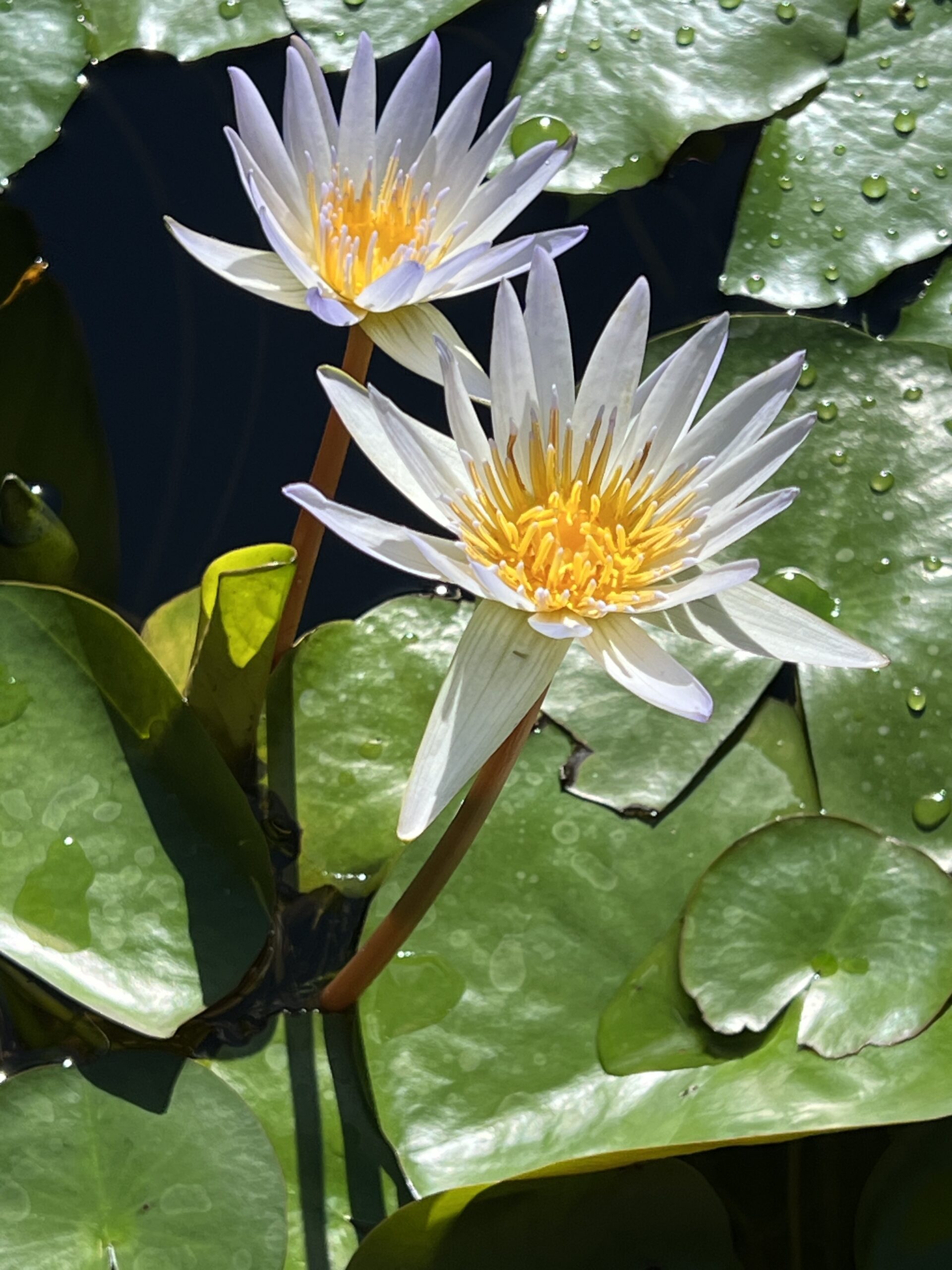June 9, 2025
THE INMATES ARE RUNNING THE ASYLUM
“At bedtime the eight year old told me his teacher said think of your mind like a pond full of fish and each fish is a feeling. Try to be the pond, not the fish.”
(Meghan K. Stack @Megankstack)
The title of this blog popped into my head as I pondered the strange behavior I’ve been witnessing recently, both globally and locally. Who put that lunatic in charge of our great southern neighbors? This blog is not a political column so please erase that last comment from your brain. I might do it for you by editing it out. But for now I’m just giving my thoughts free rein. And my thoughts take me to a comment David Brooks makes in his chapter on Illumination:
“You may find the whole idea of God ridiculous, but I ask you to believe in the concept of a soul. You may just be chatting with someone about the weather, but I ask you to assume that the person in front of you contains some piece of themselves that has no weight, size, color, or shape yet gives them infinite value and dignity. If you consider that each person has a soul, you will be aware that each person has some transcendent spark inside them. You will be aware that at the deepest level we are all equals. We’re not equal in might, intelligence, or wealth, but we are all equal on the level of our souls. If you see the people you meet as precious souls, you’ll probably wind up treating them well.”
It appeals to me to use Megan Stack’s imagery of the fishpond as a starting place for seeing the people I meet as precious souls, versus the kind of judgments my inner fish toss off about these same folk. And, since charity begins at home, I’m developing a more tolerant attitude towards the personality aspects that swim in my mind, pretty well all the time. This can be particularly challenging when one or more of these aspects play on my emotions — my fears, my needs for safety and security, acceptance and inclusivity — that make this inner fishpond an inhospitable place to swim.
In fact, much of how spiritual practice has served me over the years has been as a sanctuary, or asylum, from the more debilitating thoughts and feelings that, if unexamined, can drive me to knee-jerk actions or speech that I later regret. My journal is the first line of defense against such impulsiveness. Which is how the topic of this blog first came up. I’d been reading political commentator Heather Cox Richardson’s daily “Letters from an American” and wanting to crawl under a figurative rock. I wondered how the world could possibly recover from the insanity such a man and his supporters could unleash. And dreading where all of this insanity is leading.
But can he/they do any more damage than an uncultivated imagination that sees insult or injury behind every tree? Or worse, sinks into the mud of boredom, futility or self-pity? Once I register these pond-polluting feelings in my journal, I switch to mantra chanting or balanced breathing as the count-to-ten pause I need to restore my equanimity. For reinforcement or guidance I turn to any number of inspirational readings that offer a radically different POV. I find Pema Chödrön is particularly helpful in restoring my objectivity. In When Things Fall Apart she writes:
“To think that we can finally get it all together is unrealistic. To seek for some lasting security is futile. To undo our very ancient and very stuck habitual patterns of mind requires that we begin to turnaround some of our most basic assumptions. Believing in a solid, separate self, continuing to seek pleasure and avoid pain, thinking that someone ‘out there’ is to blame for our pain – one has to get totally fed up with these ways of thinking. One has to give up hope that this way of thinking will bring us satisfaction. Suffering begins to dissolve when we can question the belief or the hope that there’s anywhere to hide.”
Her antidote is meditation. Stepping away from all the agitating mental/emotional stimulation of our very important story lines and just sitting with whatever is happening internally. Instead of “jumping up and running” she advocates:
“With cool loneliness we do not expect security from our own internal chatter. That’s why we are instructed in meditation to label it “thinking.” It has no objective reality. It is transparent and ungraspable. We’re encouraged to just touch that chatter and let it go, not make much ado about nothing”…
Having experimented with “cool loneliness”, I’ve come to realize the futility of trying to contort myself, or my surroundings, into an ideal of how things should, could, would or ought to be. Accepting a certain amount of insanity within and around me allows space for everything to unfold according to its own destiny. Such acceptance settles the pond of my mind into a reflective space that is more profoundly at peace with “what is”. And I may one day see the precious soul in the persons who agitate me most greatly.
Chocolate peanut butter cups help with this. Also Stanley Cup hockey. Go Oilers!
